
Hey kids, we’re thrilled to have an exclusive chat with two of the men behind Fullmetal Alchemist: The Sacred Star of Milos, the feature film based on the stellar anime series, FMA: Brotherhood. Mr. Masahiko Minami, President of the acclaimed BONES Studio, which produces Fullmetal Alchemist, and the film’s director, Mr. Kazuya Murata, kindly gave us their thoughts about the movie and its Red Carpet premiere in Hollywood.
Dig it!
Fullmetal Alchemist: The Sacred Star of Milos
Mr. Masahiko Minami
BONES President
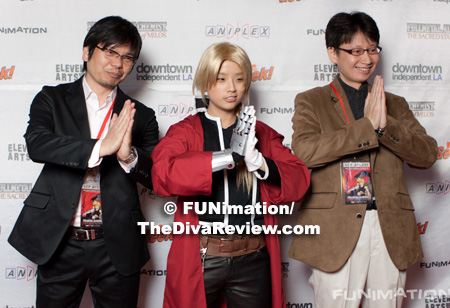 The Lady Miz Diva:
Mr. Minami, can you please tell us what it was like for you to
experience a Hollywood Red Carpet premiere for the BONES production of
Fullmetal Alchemist: The Sacred Star of Milos? What were some of your
thoughts or feelings?
The Lady Miz Diva:
Mr. Minami, can you please tell us what it was like for you to
experience a Hollywood Red Carpet premiere for the BONES production of
Fullmetal Alchemist: The Sacred Star of Milos? What were some of your
thoughts or feelings?
Masahiko Minami: First, I was very happy that the film was being released in the US in such a large scale, because it’s rare for a Japanese animation film to receive this kind of treatment. And I was excited about being welcomed by fans at the red carpet event. I’ve never experienced that in Japan. I fully enjoyed this event along with the fans.
LMD: Were you surprised at the reaction of the American audience?
MM: I am grateful that fans love all of FMA, including this film. I watched the film with the fans. I was so happy to see them being surprised and laughing in various scenes. I was able to enjoy the film together with the entire audience.
LMD: I’d like to ask about the decision to remake your own Fullmetal Alchemist series. What was the idea behind creating FMA: Brotherhood? Were you surprised at how well the second series has been received?
MM: In the first TV series, since the original manga had not been completed, we created it to have more of original animation elements. It depicts the world of “what if?” that is different from the ending of the manga. In Brotherhood, we challenged ourselves to depict everything that is appealing about the original manga that we couldn’t express fully in the previous FMA. It was a difficult challenge in terms of the script development and visual expression, how to change them from the first series, but everyone who worked on it is very happy that many fans loved it.
LMD: What is it like for you to have a property like Fullmetal Alchemist and Fullmetal Alchemist: Brotherhood that has had such enduring popularity in not one but two tellings? Does that add pressure to give the fans what they want to see in a film like this?
MM: It’s been 9 years since I became involved in the FMA project. I have been creating the FMA animation with the fans who love FMA. And I know that this manga still has a power to create the next project even after the manga had its ending. I have been working along with the staff’s strong passion to produce a new animation film, and the workload has been so dense that I didn’t even have time to feel the pressure.
LMD: What were the important things you wanted to capture or to express with this movie?
MM: Since this is a completely original story that is not in the manga, I would like everyone to enjoy the “Milos world” of this film. And also the visual expression that is unique to hand-drawn animation. (Only the train and three dimensional transmutation circle are drawn by using 3DCG)
LMD: How hands-on were you in overseeing the production? Do you confer with Mr. Murata about the progress of the film?
MM: As a producer, you are involved in every aspect of the production. From script development to selection of staff, gathering of the consortium, management of the production line, operation, casting, sound producing including voice recording and dubbing, and promotion of the film, etc. I created a structure of the film by conferring with Mr. Murata in details especially during script developing and storyboarding process.
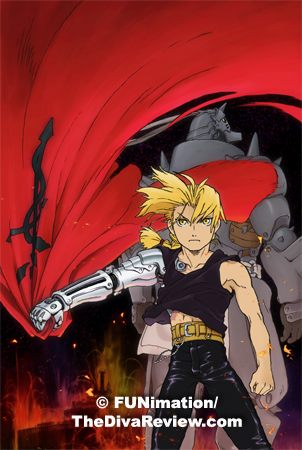 LMD: Fullmetal
Alchemist: The Sacred Star of Milos has a hand-drawn, almost retro
quality to it. Can you talk about the ideas behind the look of the film?
LMD: Fullmetal
Alchemist: The Sacred Star of Milos has a hand-drawn, almost retro
quality to it. Can you talk about the ideas behind the look of the film?
MM: Bones is basically a production company that uses hand-drawn animation technique. That was the same for this film. However, we had written the script before we organized the staff. We proceeded to select the staff members in order to realize the strong vision of “Milos” as a stage where the drama unfolds. Therefore, we needed Mr. Kenichi Konishi’s visual expression style and asked him to be the character designer and animation director. Not so much that it looks retro, but more like the expression that is pursued by creating [the image] page by page. This type of expression makes the characters like Ed, Al and Julia come alive with reality.
LMD: When working on Fullmetal Alchemist: The Sacred Star of Milos, or any of your projects based on original manga, how important is it to get the input of the original mangaka or author? Was Ms. Arakawa involved in the film at all?
MM: Whenever I work on a project that is developed from an original work, I prize the most what the author is conveying or trying to convey whether it’s based on manga or novel. From there, I think about how to express that in animation. When you are using a different medium, it is natural that expression [of the author’s message] changes. Therefore, as far as animation goes, I ask [the author] to leave it up to us. The most important thing is trust.
In this film, we asked Ms. Arakawa to give us some freedom to create a new story. But we asked her to give us rough sketches of new characters like Julia. She enjoyed working on the film with us.
LMD: How does BONES choose its projects?
MM: I can’t make generalization because we tackle projects with various themes, but we think it is important for a work to contain a universal theme, a message to the people in this generation and a characteristic of time.
LMD: Keanu Reeves was spearheading a Cowboy Bebop movie. You produced the Cowboy Bebop anime and were listed as a consultant for the live action film. Has anything further happened with this movie?
MM: I can’t talk about it…
LMD: How do you feel about live action adaptations in general, and which, if any, BONES productions would you like to see made into live action?
MM: I look forward to them [when they are made]. Live action visual expression has expanded due to enhancement of computer graphic technology, so I enjoy watching different visuals than animation. If among Bones titles [to be made into live action], perhaps FMA and the original Wolf’s Rain…with a real wolf.
LMD: What is coming up from BONES in the future?
MM: Starting in April, a show called “Eureka Seven AO” which is a sequel to “Eureka Seven” will run in Japan. It’s an original robot anime. This sequel will have more volume than the previous one. Also, I can’t disclose any titles, but we are preparing for next year and year after’s projects, some are original and others are adaptation. Especially for original projects, we are planning fun, entertaining and huge-scale projects.
LMD: Can you please give our readers a message about what to expect when they go to see Fullmetal Alchemist: The Sacred Star of Milos in cinemas?
MM: The film is very entertaining to those who know FMA and who don’t know it. Since it has an original story with mystery elements, I would like the audience to just participate and get caught in tricks that are laid out throughout the movie. I would also like the audience to submerge themselves in the fun aspect of hand-drawn animation and enjoy the film in its entirety. If watching it for the second time, you can enjoy a different side of the film by catching those tricks as you watch the film.
LMD: Thank you so much for your generosity and time, Mr. Minami. Best of luck to you and all BONES productions in the future.
MM: It was my pleasure. Please support the film.
~ The Lady Miz Diva Vélez
January 21st, 2012
Mr. Kazuya Murata
Film Director
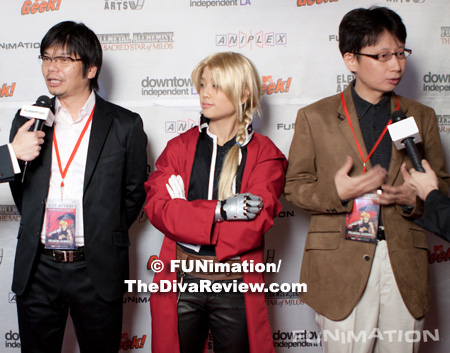 The Lady Miz Diva:
Mr. Murata, thank you so much for kindly granting this interview and
congratulations on the Red Carpet Premiere of Fullmetal Alchemist: The
Sacred Star of Milos.
The Lady Miz Diva:
Mr. Murata, thank you so much for kindly granting this interview and
congratulations on the Red Carpet Premiere of Fullmetal Alchemist: The
Sacred Star of Milos.
Kazuya Murata: Thank you.
LMD: Can you tell us what it was like for you to experience an actual Hollywood Red Carpet premiere for your film, Fullmetal Alchemist: The Sacred Star of Milos? What were some of your thoughts or feelings?
KM: I’m very happy that the American audience can see my film. I didn’t expect this film to be so big when I accepted the job, so I’m very surprised. Also, I’m amazed once again how passionate American FMA fans are. I want to thank everyone who worked very hard to make the US release [of the film] happen.
LMD: Did the audience react to the film the way you wanted, or did they surprise you?
KM: I am surprised that the [audience] reaction was stronger and clearer than I expected. I really felt that when we screened the film at Otakon last year. American audience’s reaction [to the film] is more obvious than Japanese audience. So, as a director, it is very interesting that I can easily see how the audience is responding to the film. At the same time, it is also scary.
The thing I was most concerned about before this screening was how the audience may be reacting after they saw the film. I was glad to see them all looking happy.
LMD: How did you become attached to the movie?
KM: President of Bones, Mr. Minami asked me.
I participated in production of various episodes [of Bones shows] like Eureka Seven. I think he liked what I did. He offered me opportunities to direct several projects before, but unfortunately, I had to decline each time due to scheduling conflicts. So, I was very happy that I could accept his offer this time.
LMD: What were the most important aspects you had in mind for bringing this film to the big screen?
KM: Making this film as a part of the long running FMA series without altering the whole story, at the same time, the film had to be entertaining as a stand-alone movie. I had to accomplish both of these aspects.
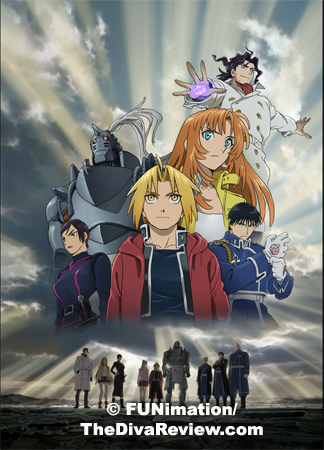 LMD: I found the
message of people fighting over land and refusing to come together over
petty differences very relevant to the way the world is today. Was that
message one of the things that attracted you to this project?
LMD: I found the
message of people fighting over land and refusing to come together over
petty differences very relevant to the way the world is today. Was that
message one of the things that attracted you to this project?
KM: Although this confrontation structure among people was the writer, Mr. Yuichi Shinbo’s idea, I emphasized the race conflict issue further as I went through the drawing process. This is because the purpose of Julia and Ashley’s (two guest main characters of the film) actions comes from that very issue. Especially to Julia, since her purpose in life is to save her people from their current deprived status and situation, I had to go deep into the race conflict issue in order to clearly depict her emotions.
Therefore, my main goal was to promote actual existence of these characters in the film, rather than sending a message [about such issues].
I don’t think you can resolve the race conflict issues around the world collectively with one general message because each conflict involves with unique characteristics and history. However, for the future of humanity, we have to resolve the issue. If someone who saw the film felt something, became interested in the issue and decided to do something about it, it would mean unexpected happiness for me.
LMD: There is a lot of emotion in the film, and a lot of action. How did you judge the balance of each of those aspects of the movie?
KM: I created a big plot structure. First, I established the confrontation structure of characters in the action sequences in the first part of the film. Then, I presented a dramatic plot that introduces the issues which created the conflict and determines where each character stands. And in the last part of the film, the conflicting relationships are resolved as the mysteries are revealed.
What I paid attention to was to actively project character relationships and stage settings within the action sequences.
This structure is this film itself. So, when we drafted the story, the balance between action and drama was pretty much determined.
Besides that, I mainly focused on the reality of each scene.
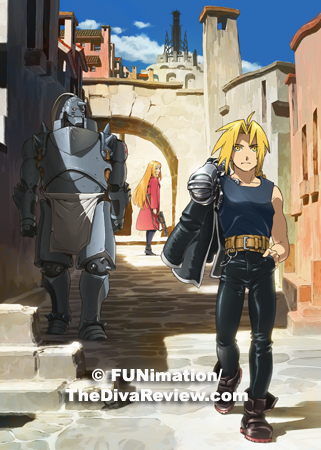 LMD: The animation
style is a bit different to the series. It has a hand-drawn, almost
retro quality to it, whereas in many films, people try to make animation
look as high-tech as possible. Can you talk about what is different in
the artistic approach to the film?
LMD: The animation
style is a bit different to the series. It has a hand-drawn, almost
retro quality to it, whereas in many films, people try to make animation
look as high-tech as possible. Can you talk about what is different in
the artistic approach to the film?
KM: Film expression, including live action and animation, has been rapidly refined by introduction of computer graphics. However, at the same time, the film loses the human touch by making it refined and beautiful.
With this film, I wanted the audience to feel the dynamism and warmth of handmade film by going against the current trend.
Especially the animation director, Mr. Kenichi Konishi, specializes in this type of expression, full of hand-drawn feel, and one of the big reasons [for going against the trend] was because I wanted to maximize his skills.
This type of retro expression does not suit every film, but I think it was the right fit for this film.
LMD: You have one of the best-known voice casts in anime with Fullmetal Alchemist. What is your approach to working with them? Do you act out what you want them to express? Do you prefer to have them gathered together in the studio for their scenes together?
KM: I conveyed the gist of acting in this film to everyone when all the casts were gathered.
All of the characters in FMA have positive attitudes about going after their dream or desire and overcome difficulties or tragic circumstances with strong will, sometimes cunning, and other times, pure or cheerful, or strong or gentle. I asked them to base their acting from that kind of positive attitude towards life.
I didn’t coach the actors when it came to each individual acting {portrayal}. Instead, I explained to them about the character’s emotion and purpose in the scene, so that they can construct their own style of acting from there.
Also, we recorded with as many casts as possible together. It was because I wanted them to act by feeling the film’s atmosphere. Actors feed off of each other’s performance. This created a “performance mood” that is special to this particular film.
That is not something one actor can create by just thinking by himself. That is created when skilled actors gather to work in one place. I see big value in doing that.
LMD: Did you ever confer with the mangaka Hiromu Arakawa during the production or read or watch the Fullmetal Alchemist books or anime?
KM: No, I didn’t consult with Ms. Arakawa.
Basically, she has always taken a stance as “Anime is left to the staff of anime,” and that was the same for this film.
However, we asked her to look over the script and drawings; meaning, we made the film as we revived her approvals.
I did read the entire manga. It was very interesting, and at the same time I was impressed by how deep the content was.
As for the TV series, I watched it when it was being broadcast, but didn’t watch it again just to create this film.
That was because I wanted to try new animation expression with new group of staff with the original manga as the source and avoid being influenced by the expression of the previous staff.
LMD: Would you please tell us what is next for you, director Murata?
KM: I’m working on an original TV series for 2013.
I can’t disclose anything, but think it will be a series with new visual expression like you’ve never seen before. I would like the American audience to see it as well when it is finished.
LMD: Can you please give our readers a message as to what to expect when they go to see Fullmetal Alchemist: The Sacred Star of Milos?
KM: By chasing Melvin, you see the mystery of Table City unfold. Unfolding the mystery is not the theme of the film, but when it is revealed, you will realize that there were clues throughout the movie. So you can enjoy it more if you pay attention to the screen from the beginning.
Also, since the characters’ performance and action pursue basic “pleasantness of the movement,” I would like the audience to just sit back and take a ride with them.
As for drama aspect of the film, I would like the audience to focus on Julia and the Elric brothers’ encounter, their conflict and change in their empathetic feelings.
LMD: Thank you so much for your time and generosity, Mr. Murata and we wish you all the best in the future.
KM: It was my pleasure.
~ The Lady Miz Diva Vélez
January 21st, 2012
Special Thanks to the good folks of FUNimation for arranging this interview.
© 2006-2022 The Diva Review.com
|
|





